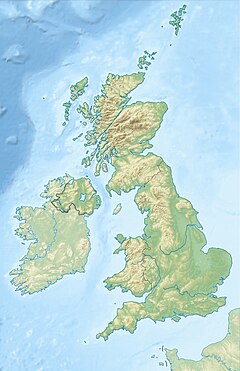Aldershot Observatory
 |
|
| Location(s) |
Aldershot, United Kingdom |
|---|---|
| Coordinates |
51°15′32″N 0°45′48″W / 51.2588°N 0.7632°WCoordinates: 51°15′32″N 0°45′48″W / 51.2588°N 0.7632°W |
| Built | 1906– |
| Telescope style |
Equatorial mount refracting telescope observatory |
| Diameter | 8 in (0.20 m) |
|
|
|
|
[]
|
|
Aldershot observatory is a circular red-brick building with a domed roof standing on Queens Avenue in Aldershot Military Town near Aldershot, England, home to the British Army since circa 1854. Inside is an 8-inch (203 mm) refracting telescope on a German-type equatorial mount with a clockwork drive which will run for about 2 hours without rewinding, this has a facility to vary the drive rate. The telescope and observatory building were a gift from aviation pioneer Patrick Young Alexander to the British Army, a fact which is recorded by a plaque near the observatory door. It reads: ‘Presented to the Aldershot Army Corps by Patrick Y Alexander Esq 1906’.
In 1891, Patrick Alexander ordered the telescope from the well-known Victorian telescope makers Thomas and Howard Grubb of Dublin with all the usual fittings associated with a professional instrument of the time. It is not entirely clear where the telescope was first installed, accounts vary. It is probable that the telescope was first erected at one of Patrick Alexander's several private workshops in Bath: either 'DeMontalat Wood' or 'The Mount'. The telescope was a substantial instrument, which together with its mounting, must have weighed several tons. The telescope was fully equipped for astronomical observations and Patrick became a fellow member of the Royal Astronomical Society up until 1921. Although he enjoyed showing his telescope to friends and distinguished visitors, any interest he had in astronomy was overshadowed by his other aviation related passions — especially ballooning; the telescope was probably a scientific toy. Barry Bellinger suggests that the telescope was used to track pilot balloons released into the air, before releasing any main balloons; however, a telescope of this size and type seems ill-suited to such a task.
In 1902 Patrick Alexander offered the telescope to the city of Bath, with all expenses paid to build an observatory, but Bath refused because the cost of upkeep would have to be paid by local taxpayers. The telescope was later dismantled and stored, until a new location was found for it to be sited. In 1904 Alexander moved to 112 Mychett Road Mychett, Surrey. He installed the telescope in has back garden.
...
Wikipedia

